EMERGENCY MEETING:
PREPARING TO SUE MTA
Crenshaw Subway Coalition Community Meeting
Today Monday, July 18 6:30 – 8:30 PM
US Bank Community Room on Crenshaw/Slauson
5760 Crenshaw Blvd
Los Angeles, CA 90016
MTA is Trying to Speed Up the Game Clock stopwatch(Forgive the incredibly short notice, but we are in part responding to MTA’s unprecedented attempt to vote to approve the project 7 weeks sooner than legally permissible.)
Attendees of our June 30th meeting were first informed of two elements of our multi-faceted strategy to win the battle with MTA for an underground Leimert Park Village station and subway on Crenshaw Blvd:
1. Holding our elected officials from Congress down to City Council and the Mayor accountable for delivering more of our tax dollars to the Crenshaw-LAW project to fund the Leimert Park Village station and subway in Park Mesa Heights
2. Suing Metro in court for violating environmental and civil rights laws
At tonight’s community meeting we will further explain the legal basis for a lawsuit, in particular the California Environmental Quality Act (CEQA) that MTA is violating.
The importance of tonight’s meeting increased a few days ago when it was revealed that MTA is attempting to “speed up the game clock” and approve the project at their August 4 board meeting as opposed to their September 22 board meeting. (After MTA approves the project, the window of opportunity to file a CEQA lawsuit is JUST 30 DAYS.)
In our review of every other transit study of similar nature over the past decade, MTA provided a 30 day public review period and multiple community meetings after the final project document was released to provide citizens an opportunity to, at the very least, go on the record to express their concerns. There are even federal requirements for a 30 day public review period. And yet as of this morning, just 17 days from August 4, MTA still has not released the final project document for review. They haven’t even given it to the elected officials or fellow public agencies!
This is just the latest greatest display of disrespect of our community and egregious violation by MTA and partially why we believe that a legal challenge is key to our victory. It will make MTA more likely to concede the Leimert Park Village station and Park Mesa Heights tunnel. As was clear in the lead up to the May 26th MTA board vote. MTA has the money to build the project the way the community desires, they just currently lack the will. Simply, MTA’s draft document is legally flawed, the basis for Metro staff, Mayor Villaraigosa and wanna-be Mayor Zev Yaroslavsky’s opposition to the Leimert Park Village station and Park Mesa Heights tunnel is flawed, and if MTA had conducted a proper environmental study both designs would be in the project.
There will be more to come after tonight’s meeting, but for now, please hear our urgent appeal for generous donations so that we can fund a legal challenge. Lawyers are interested, but because this type of law is a true specialty – there will be costs.
The leaders of the Crenshaw Subway Coalition and Fix Expo Campaign have adopted as a policy to only ask the community for financial support when we need it – and now is that time.
As has become clear both in our fight with MTA on the Expo Line crossing at Dorsey High School and in other project fights with MTA by other communities, the agency/board does not begin taking communities seriously until lawyers get involved.










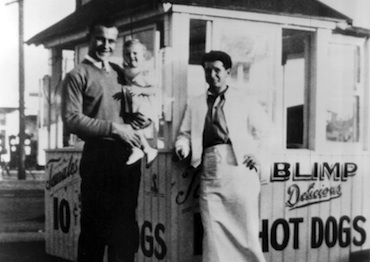 The Karchers’ entrepreneurial success story was one of expansion – within a few years, they had bought three more hot dog stands in other parts of L.A. In 1945, they moved to Anaheim and opened their first full-service restaurant, adding hamburgers to the menu for the first time in 1946. Ten years later, they opened the first two Carl’s Jr. restaurants in Anaheim and Brea, so named because they were junior versions of Carl’s original drive-in restaurant. Now, it’s a global fast-food chain with more than 3,000 locations.
The Karchers’ entrepreneurial success story was one of expansion – within a few years, they had bought three more hot dog stands in other parts of L.A. In 1945, they moved to Anaheim and opened their first full-service restaurant, adding hamburgers to the menu for the first time in 1946. Ten years later, they opened the first two Carl’s Jr. restaurants in Anaheim and Brea, so named because they were junior versions of Carl’s original drive-in restaurant. Now, it’s a global fast-food chain with more than 3,000 locations.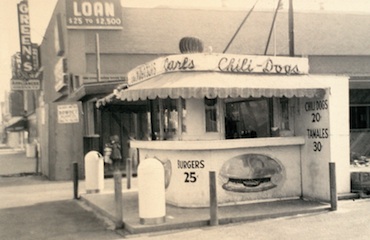
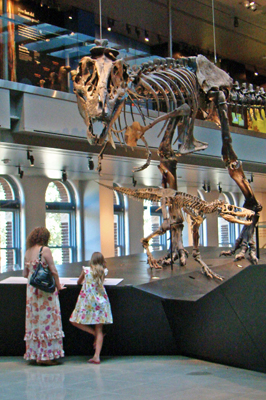 Teething toddlers can exhaust parents, but a set of chompers on a two-year-old Tyrannosaurus rex that has just arrived to the Natural History Museum may delight parents and children starting July 16. After all, those baby teeth teeth were once capable of reaching the side of a ram’s horn – each.
Teething toddlers can exhaust parents, but a set of chompers on a two-year-old Tyrannosaurus rex that has just arrived to the Natural History Museum may delight parents and children starting July 16. After all, those baby teeth teeth were once capable of reaching the side of a ram’s horn – each.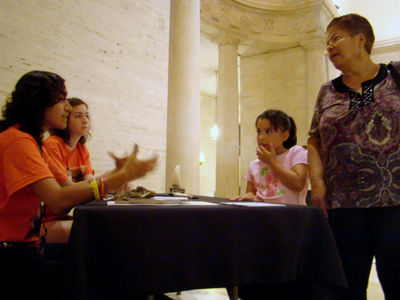 “This really is a place to learn,” said Dominguez, a New Designs Charter School student who has her eye on an archaeology program at Cornell University. “Most of us who took the dinosaur training have been really excited to study more and learn all the facts we can.”
“This really is a place to learn,” said Dominguez, a New Designs Charter School student who has her eye on an archaeology program at Cornell University. “Most of us who took the dinosaur training have been really excited to study more and learn all the facts we can.”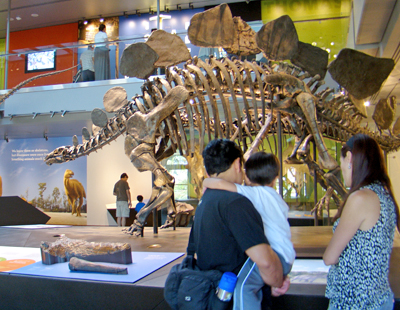 Museum members and educators received a sneak preview this week and many slowed to a halt in awe upon entering the epic hall.
Museum members and educators received a sneak preview this week and many slowed to a halt in awe upon entering the epic hall.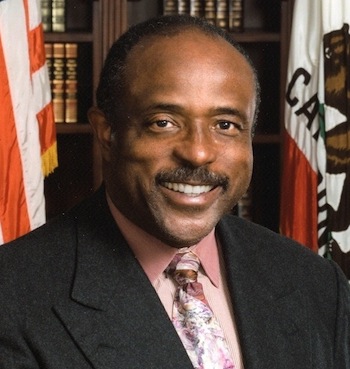 A three-justice panel from California’s 2nd District Court of Appeals has ordered Los Angeles Superior Court Judge Kathleen Kennedy to reinstate two felony counts of fraudulent voting against State Sen. Roderick Wright (D-Inglewood) that she had dismissed earlier this year.
A three-justice panel from California’s 2nd District Court of Appeals has ordered Los Angeles Superior Court Judge Kathleen Kennedy to reinstate two felony counts of fraudulent voting against State Sen. Roderick Wright (D-Inglewood) that she had dismissed earlier this year.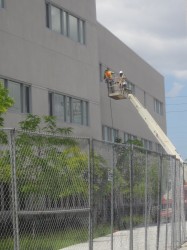 John C. Fremont High School, located in South Los Angeles, recently underwent reconstruction, a process that allows the Los Angeles Unified School District to make teachers at low performing schools, evaluated by a consecutive high dropout rates and low standardized test scores, reapply for their jobs. Some Fremont High teachers, at the time, decided not to reapply for their jobs as a symbol of opposition to the school district.
John C. Fremont High School, located in South Los Angeles, recently underwent reconstruction, a process that allows the Los Angeles Unified School District to make teachers at low performing schools, evaluated by a consecutive high dropout rates and low standardized test scores, reapply for their jobs. Some Fremont High teachers, at the time, decided not to reapply for their jobs as a symbol of opposition to the school district.
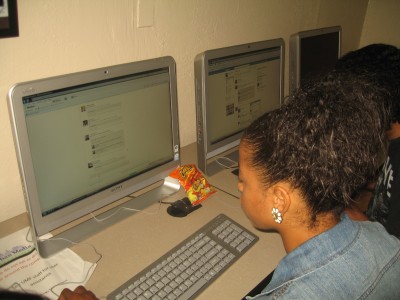 Danielle Tavasti, who has been attending the journalism training for two years and travels all the way from Long Beach with her brother Jonathan, loves the atmosphere and what she has learned along the way. “I like that they give us so many opportunities to experience journalism first hand. They took us to the USC Annenberg TV studios, where they showed us how to use cameras. That was really cool. They taught us skills we can use in any career,” referring to being able to write better and to speak in front of a camera. Danielle has even started her own website.
Danielle Tavasti, who has been attending the journalism training for two years and travels all the way from Long Beach with her brother Jonathan, loves the atmosphere and what she has learned along the way. “I like that they give us so many opportunities to experience journalism first hand. They took us to the USC Annenberg TV studios, where they showed us how to use cameras. That was really cool. They taught us skills we can use in any career,” referring to being able to write better and to speak in front of a camera. Danielle has even started her own website.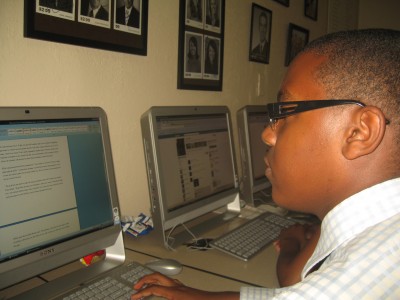 He has just graduated from high school and will be heading to Northern Arizona University in the fall to study broadcast journalism. “My dream is to be a sports reporter for ESPN.”
He has just graduated from high school and will be heading to Northern Arizona University in the fall to study broadcast journalism. “My dream is to be a sports reporter for ESPN.” 




